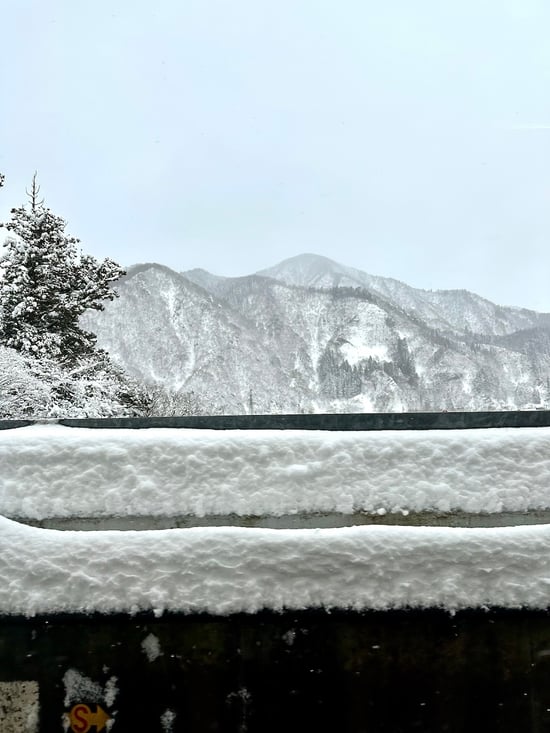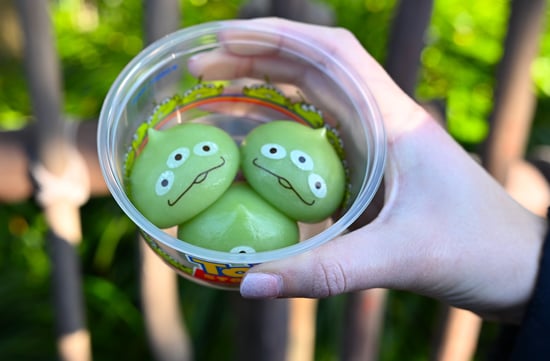Mt. Fuji & Fuji Five Lakes Travel Guide
富士五湖 • ふじごこ
So you're planning a trip to see the majestic Mt. Fuji? Dive into our comprehensive guide covering everything you need to know about the Fuji Five Lakes area and the must-do experiences awaiting you.
Mt. Fuji & Fuji Five Lakes Travel Guide: An Introduction
Mount Fuji, Japan's highest peak at 12,389 feet (3,776 meters), is an iconic dormant volcano renowned for its perfect conical shape and cultural significance. Mt. Fuji holds profound spiritual significance in Japanese culture and Shinto religion. It is considered a sacred mountain and has been revered for centuries as a place of spiritual power and inspiration. Many people undertake pilgrimages to Mt. Fuji as a form of a religious or personal journey, seeking purification, enlightenment, and/or a connection with nature and the divine.
Located at its northern base, the Fuji Five Lakes region comprises five picturesque lakes: Kawaguchi, Yamanaka, Sai, Shoji, and Motosu. This area offers stunning views of Mt. Fuji, especially during cherry blossom and autumn foliage seasons. However, the best views of Mt. Fuji are actually during the winter months when the sky is clearest, offering unobstructed views of the majestic volcano. With hot springs, museums, and cultural sites, the Fuji Five Lakes area provides a diverse experience, blending natural beauty with recreational and cultural attractions for travelers to enjoy.
Mt. Fuji & Fuji Five Lakes Travel Guide: Quick Tips
Mt. Fuji & Fuji Five Lakes Top Sights
No Fuji Five Lakes Travel guide would be complete without a listing of the top sights in the region. With its diverse array of attractions and stunning vistas, Mt. Fuji and Fuji Five Lakes promises an unforgettable experience for every traveler.
We've highlighted all the attractions we visited and adored with the universal symbol of love, ♡.
- Arakurayama Sengen Park & Chureito Pagoda: ♡ The Chureito Pagoda is a picturesque five-story pagoda located in Arakurayama Sengen Park. An observation deck offers breathtaking views of Mt. Fuji framed by vibrant cherry blossoms in spring and fiery foliage in autumn, making it a popular spot for photographers and visitors alike.
- Oishi Park at Lake Kawaguchiko: ♡ Oishi Park, situated on the north shore of Lake Kawaguchiko, is renowned for its stunning panoramic views of the iconic mountain. Visitors can enjoy leisurely strolls along the lakeside promenade, take in the beautiful seasonal foliage, and relax in designated picnic areas. The park also features numerous observation points and benches where visitors can soak in the majestic scenery of Mt. Fuji and the surrounding landscape.
- Oshino Hakkai: ♡ Oshino Hakkai is a charming rural village located at the foot of Mt. Fuji. Renowned for its crystal-clear spring water and tranquil ambiance, the village is a popular tourist destination. Visitors can explore the eight ponds of Oshino Hakkai, which are fed by melted snow from Mt. Fuji. The village also offers traditional thatched-roof houses, picturesque scenery, shops, and restaurants.
- Fujiyoshida Sengen Shrine: Fujiyoshida Sengen Shrine, formally known as Kitaguchi Hongū Fuji Sengen Jinja, is a historic Shinto shrine located at the northern base of Mt. Fuji in Fujiyoshida City. It is one of the oldest and most significant shrines dedicated to Mt. Fuji worship. The shrine dates back over 1,000 years and is known for its elegant architecture, including beautiful vermillion-colored buildings and intricate wooden carvings. Visitors come to pay their respects, admire the serene surroundings, and participate in traditional rituals such as purification ceremonies and prayer rituals for safe travels and climbing Mount Fuji.
- Mt. Fuji Panoramic Ropeway: The Mt. Fuji Panoramic Ropeway, also known as the Kawaguchiko Ropeway, is a popular tourist attraction located in Lake Kawaguchiko. The ropeway offers breathtaking panoramic views of the surrounding landscape, including Mount Fuji, Lake Kawaguchi, and the picturesque Fuji Five Lakes region. Visitors can ascend to an observation deck situated at an elevation of around 1,075 meters above sea level, providing stunning vistas of the iconic mountain and its surrounding natural beauty. Note that the ropeway may cease operations due to high winds, rain, or snow.
- Fuji Fifth Station: Fuji Fifth Station, or "Gogōme" in Japanese, refers to the fifth level of the Yoshida Trail, one of the primary routes for climbing Mt. Fuji. It's the highest point accessible by vehicle and serves as a popular starting point for climbers. At an elevation of around 2,300 meters (7,546 feet), Fuji Fifth Station offers stunning views of the surrounding landscape and provides various amenities such as souvenir shops, restaurants, and restroom facilities. Note that access to Fuji Fifth Station may be restricted during certain times of the year due to weather.
If you are looking for even more things to do in the Fuji Five Lakes region, including other spots to see Mt. Fuji up-close, check out the links below.
The Top 30 Spots for Viewing Mt. Fuji >
Japan Travel - Fuji Five Lakes >
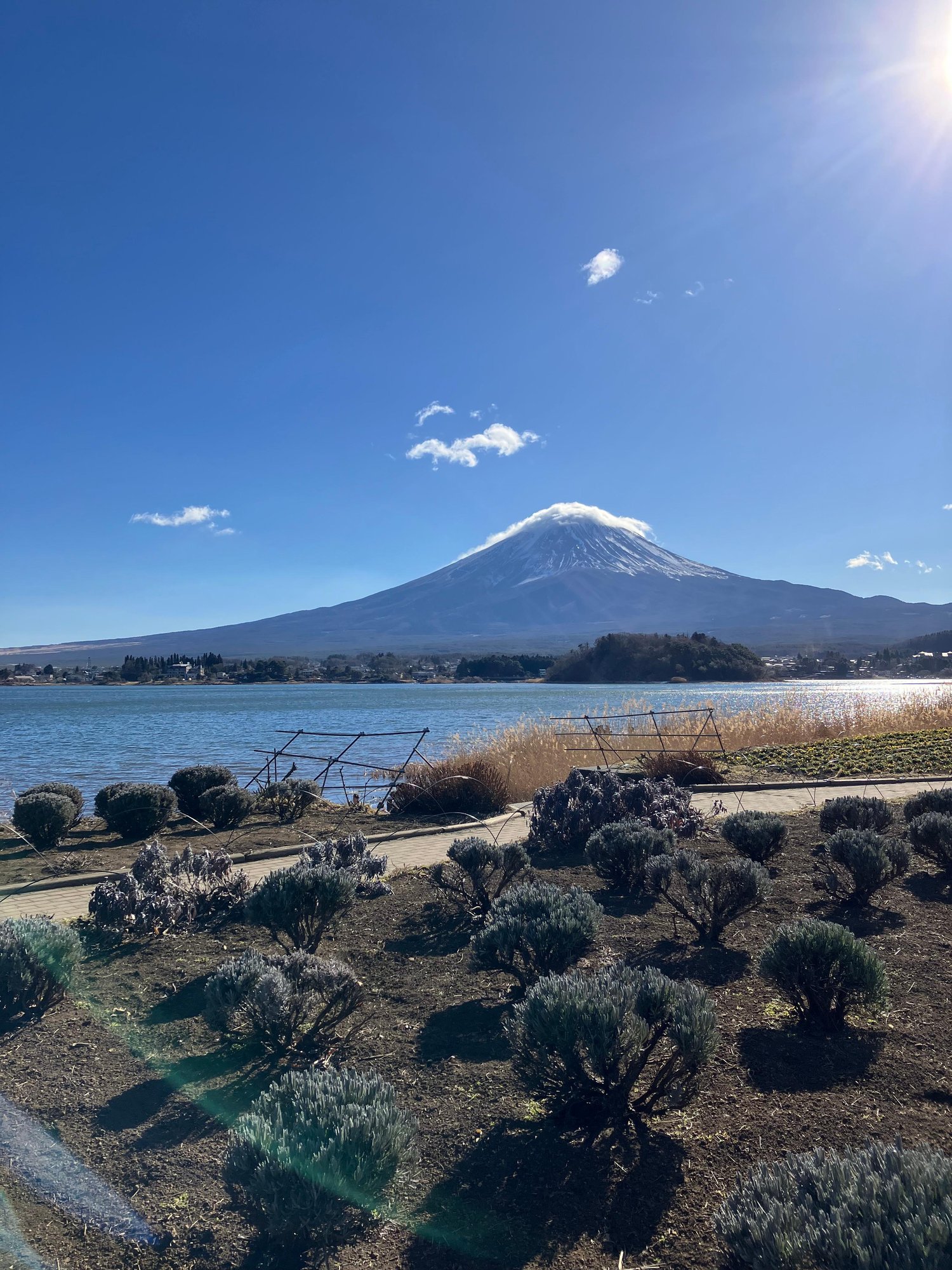
A Taste of Fuji Five Lakes
Fuji Five Lakes offers a variety of fantastic culinary offerings, with some regional specialties worth trying during your visit.
Specialty Foods
Fuji Five Lakes is known for several delicious local specialties:- Hoto Noodles: Hoto noodles, a regional specialty of the Fuji Five Lakes area, feature thick wheat noodles in a savory miso broth with vegetables.
- Udon: Udon noodles from the Fuji Five Lakes area are known for their chewy texture and are typically served in a hot broth with various toppings such as tempura, green onions, and kamaboko (fish cake).
- Fresh Seafood: Fuji Five Lakes is known for its fresh seafood, sourced from the area's rivers and lakes. The most popular is trout (sanma).
- Kappameshi: A rice dish topped with a mixture of cucumber and grated yams, and seasoned with sesame seeds and seaweed. The name "kappa" refers to a mythical water creature in Japanese folklore, which is often depicted as enjoying cucumbers, hence the association with this dish.
Popular Restaurants
Fuji Five Lakes is full of restaurants serving a variety of cuisines. We had lunch at a restaurant in Lake Kawaguchiko called Tsuijya which serves cuisine local to Fuji Five Lakes. The food was good and we were seated at a table with a beautiful view of Lake Kawaguchiko. Since it was cold, we had udon, paired with some local sake. Looking for other restaurant suggestions? Check out the link below.
Top Restaurants in Fujikawaguchiko >
Local Sake & Plum Wine
For any sake enthusiast, a stop at Ide Sake Brewery in Fuji Five Lakes is a must during your visit. The brewery utilizes spring water from Mt. Fuji for their brews. They are open to the public for tours, however, advance reservations are required. They produce a number of different varieties of sake, as well as plum wine.
Ide Sake Brewery is about a 10 minute walk from Kawaguchiko Station, making it easily accessible by foot.
If sake isn't your thing, check out Fujizakura Heights Beer, a German-style craft brewery in Fujikawaguchiko. Their beer is available at bars and restaurants throughout the Fuji Five Lakes region.
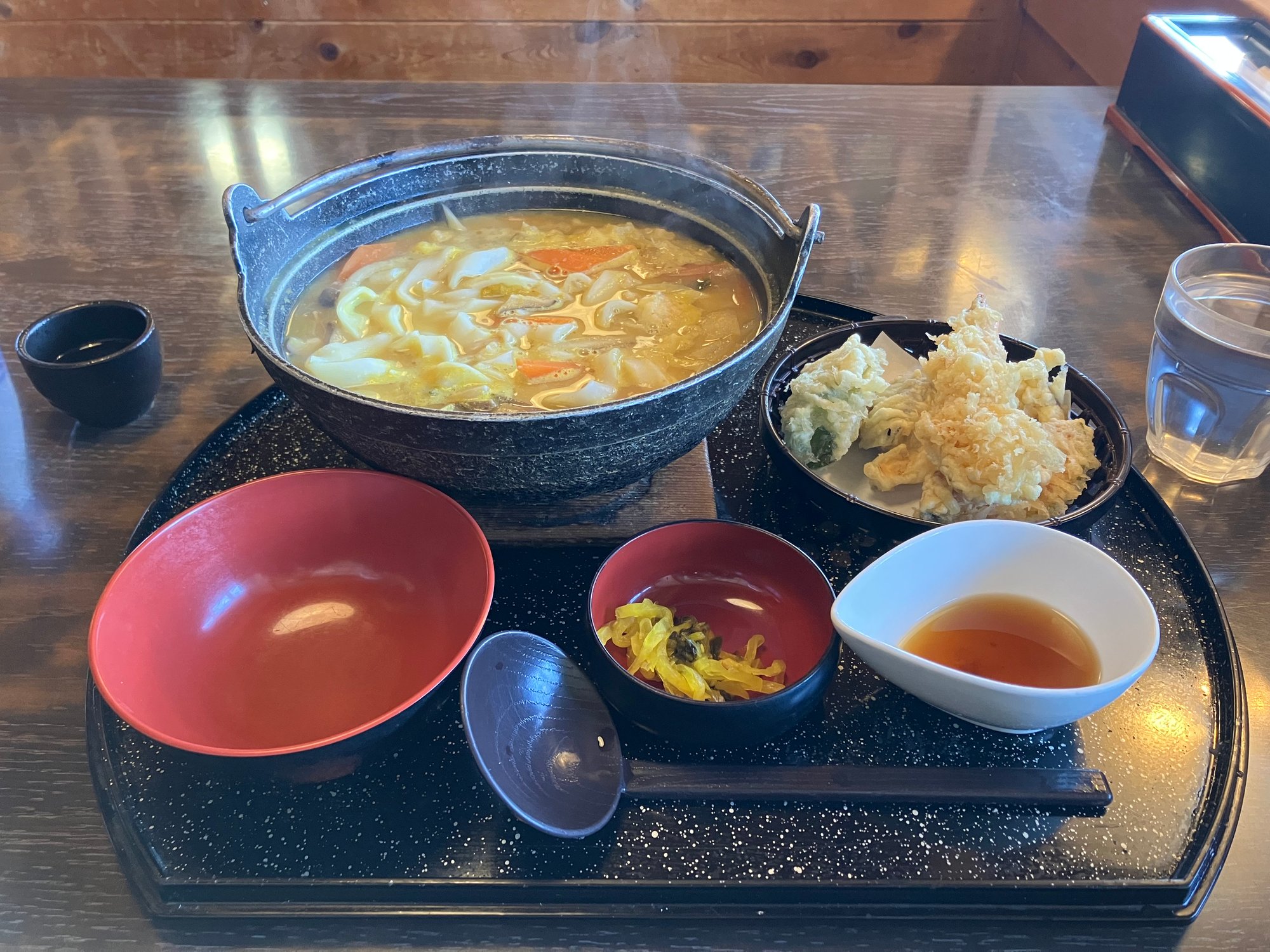
Shopping in Fuji Five Lakes
Fuji Five Lakes offers a unique shopping experience that blends traditional crafts with kitschy finds. There is not one particular shopping area or district within Fuji Five Lakes as you will find souvenir shops scattered throughout the region.
We didn't buy much on our day-trip to Fuji Five Lakes, but we did find the largest assortment of souvenirs at Oshino Hakkai.
Fuji-Specific Souvenirs
Mt. Fuji-Themed Goods: From Mt. Fuji-shaped chopstick rests, to chocolates and sweet treats, clothing items, and more, you're bound to find a huge assortment of Mt. Fuji-themed goods to bring home with you.
Local Sake & Plum Wine: Sake and plum wine from Ide Sake in Fuji Five Lakes is regarded for its quality and use of spring water from Mt. Fuji's snowmelt. The sake produced ranges from sparkling and light to rich and full-bodied, catering to various tastes and preferences.
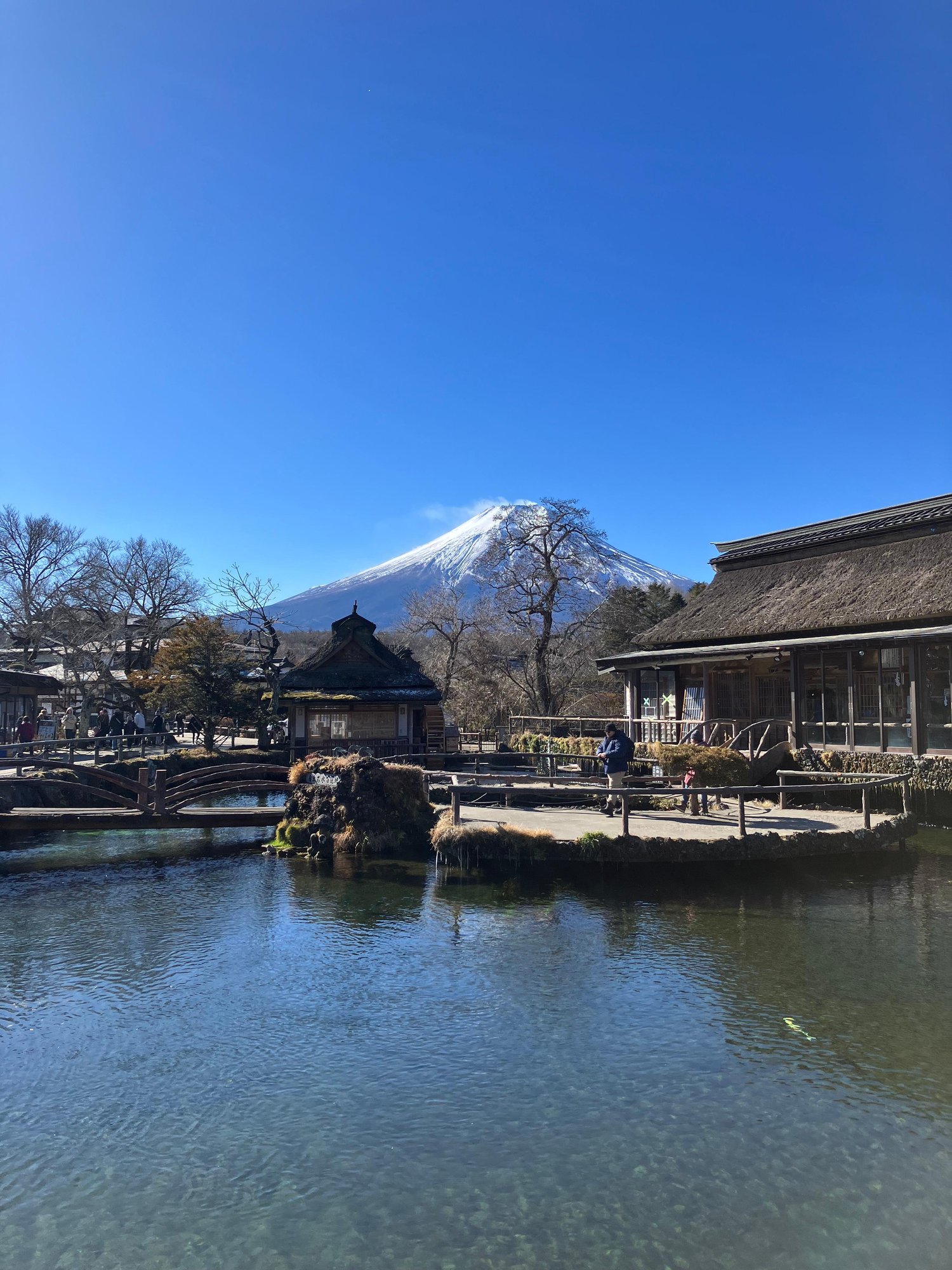
Getting to/from Fuji Five Lakes
Among the lakes of Fuji Five Lakes, Lake Kawaguchiko is the most easily accessible and has the most things to see for the average traveler. The other four lakes are not as developed nor as easily accessible by public transportation.
Tokyo is easily connected to Lake Kawaguchiko by both train and bus, making it a straightforward journey, and a great place to visit for the day.
From Tokyo to Lake Kawaguchiko (Train):
JR Chuo Line & Fujikyuko Line: To reach Lake Kawaguchiko by train, travelers often take the JR Chuo Line from Tokyo's Shinjuku Station to Otsuki Station, a journey lasting anywhere between 70-100 minutes, depending on the train. From Otsuki, transfer to the Fujikyu Railway Line, which takes about 55 minutes to reach Kawaguchiko Station. Train tickets do not need to be purchased in advance and can be purchased at the station. To see route options, departure times, and fares, visit the Fujikyu Railway website.
JR Fuji Excursion Limited Express: Alternatively, you can take the JR Fuji Excursion Limited Express train from Shinjuku Station direct to Lake Kawaguchiko. The journey takes just under two hours. There are three trains per day, running in each direction, on this line. Train tickets do not need to be purchased in advance and can be purchased at the station. Note that as this is a limited express train, all seats require reservations. To see route options, departure times, and fares, visit the JR East website.
From Tokyo to Lake Kawaguchiko (Bus):
Bus to/from Tokyo Station: Fujikyu and JR Kanto Bus both operate direct buses between Tokyo Station and Kawaguchiko Station. The journey takes approximately two hours and costs ¥2,060. The bus may make multiple stops before arriving in Lake Kawaguchiko. There are multiple departures each day, with as many as two per hour. Reservations can be made in advance via the Willer Travel website.
Bus to/from Shinjuku Station: Direct bus service between Shinjuku Station and Lake Kawaguchiko is available via the Keio Bus company. The journey takes approximately two hours and costs ¥2,200. The bus may make multiple stops before arriving in Lake Kawaguchiko. There are multiple departures each day. Reservations can be made in advance via the Keio Dentetsu website.
Bus to/from Shibuya Station: Direct bus service between Shibuya Station and Lake Kawaguchiko is also available with Keio Bus. The journey takes approximately two-and-a-half hours and costs ¥2,100. The bus may make multiple stops before arriving in Lake Kawaguchiko. There are fewer departures each day on this route than those departing from Tokyo or Shinjuku Station. Reservations can be made in advance via the Willer Travel website and the Keio Dentetsu website.
Getting Around Lake Kawaguchiko
Lake Kawaguchiko is a relatively compact city with many of its attractions located a short walk from Kawaguchiko Station. The lake itself is about a 10-minute walk from Kawaguchiko Station.
Walking: The city is pedestrian-friendly, and walking is an excellent way to explore Lake Kawaguchiko.
Omni Sightseeing Buses: Omni Sightseeing Buses are the most popular way for tourists to explore the Fuji Five Lakes area. There are three bus lines, all of which run from Kawaguchiko Station. Additional information regarding the routes, fares, and more can be found on the Mt. Fuji Pass website.
Taxi: Taxis are available in Lake Kawaguchiko with a convenient taxi stand at Kawaguchiko Station. Taxis and can be convenient for reaching specific destinations quickly, especially if you're traveling with luggage or in a group.
Other Transportation Options & Tours for Fuji Five Lakes
Private Driver: If you're short on time, traveling with a larger group, or looking to book the most convenient option for exploring the Fuji Five Lakes region from Tokyo, then hiring a private driver for the day is a great option. This is the route we selected and our driver picked us up directly from our hotel in Tokyo and drove us to various sites within Fuji Five Lakes. While this option was not cheap, with private drivers ranging between $400-600 USD for the day, it was certainly convenient. We booked our driver via our affiliate partner, GetYourGuide.
Organized Tour from Tokyo: A more budget-friendly option is to book an organized tour from Tokyo to Fuji Five Lakes. There are a number of options via our affiliate partner, GetYourGuide, at varying price points. Most of the tours hit the most scenic and popular tourist sites within the region.
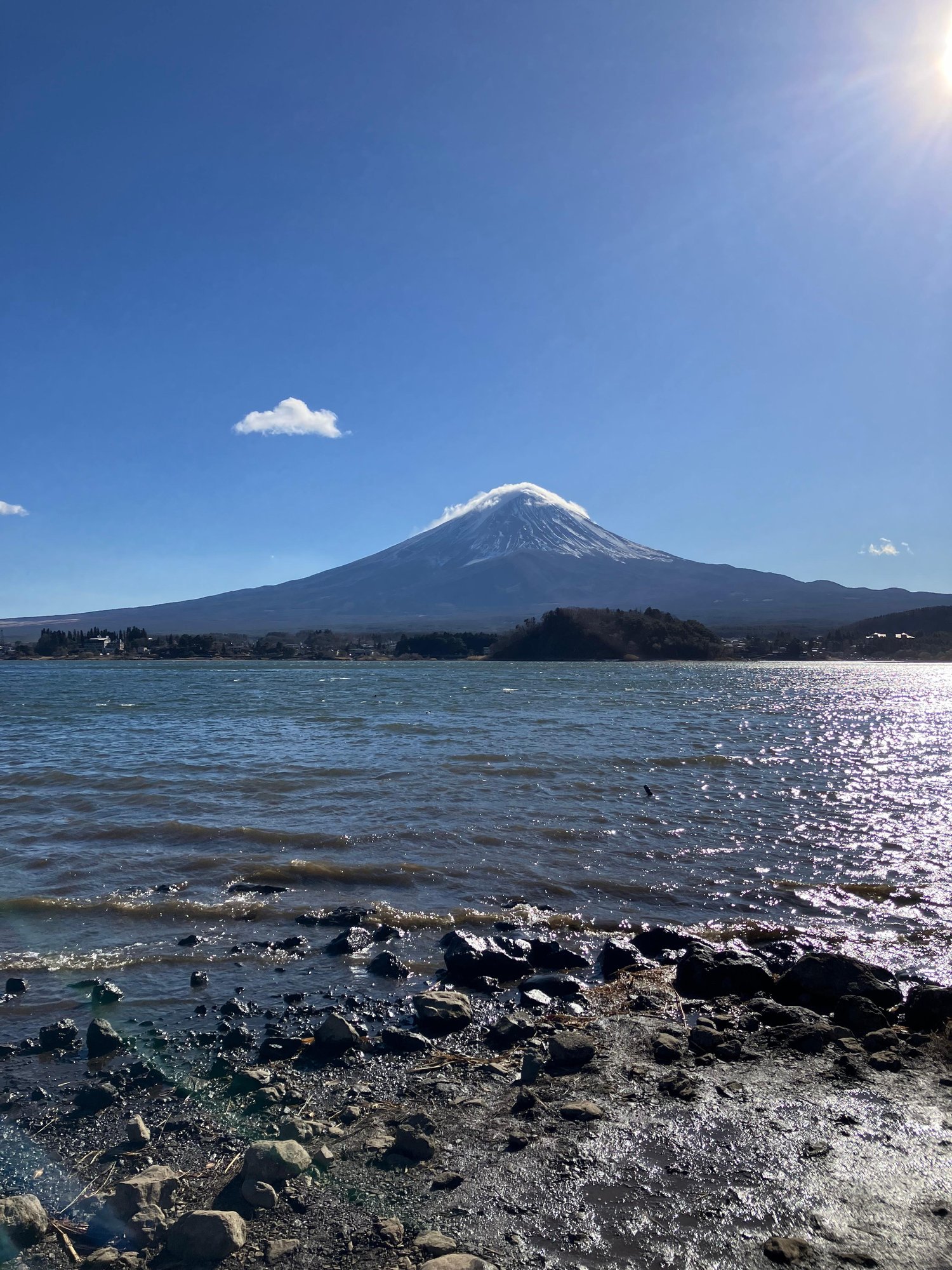
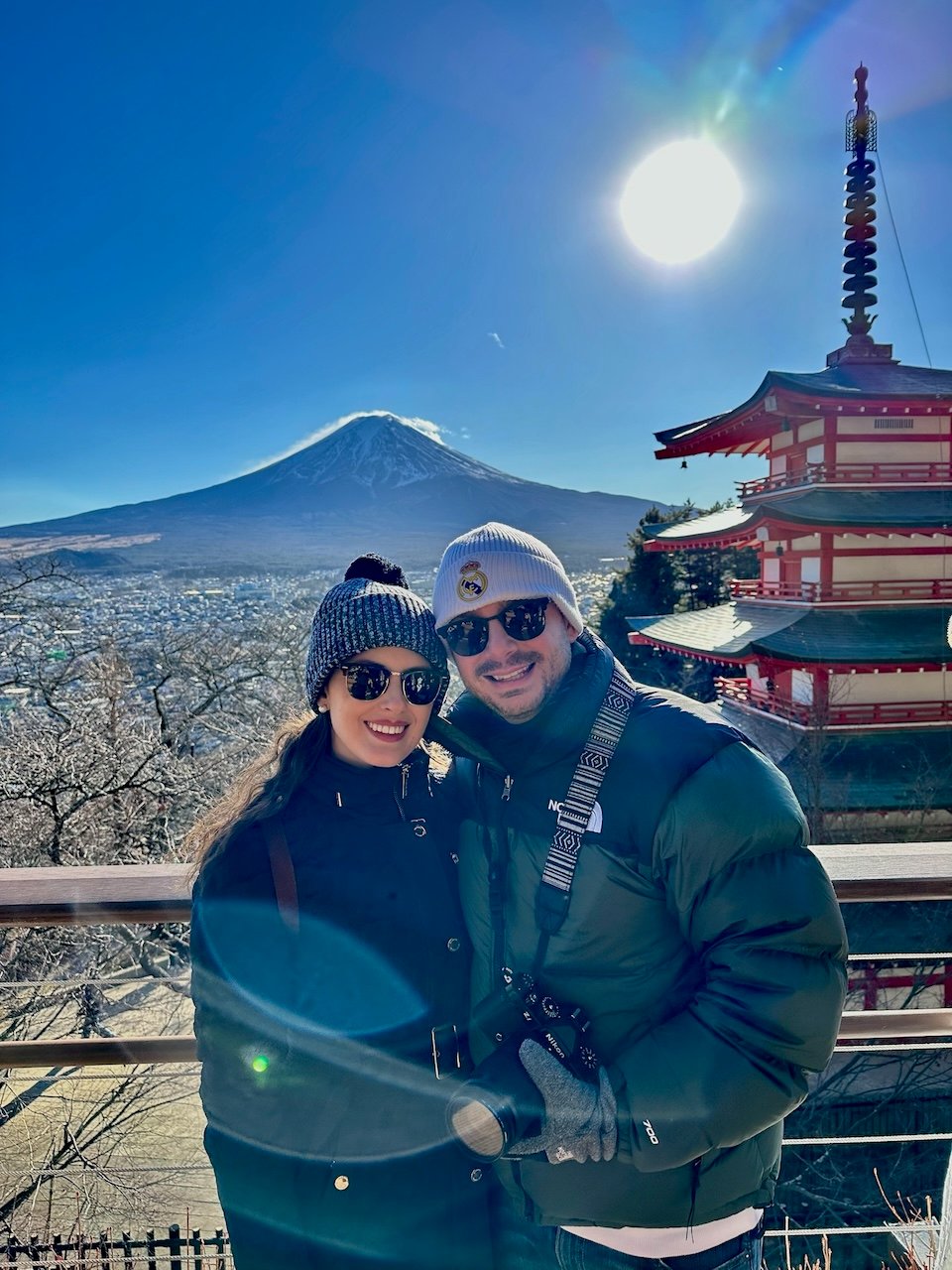
Why we loved Mt. Fuji & Fuji Five Lakes
Our experience of seeing Mt. Fuji was truly unforgettable. Blessed with clear visibility during our visit in January, we were captivated by the majestic sight of the volcano from various vantage points. Among them, the view from Oishi Park on Lake Kawaguchiko's north shore stood out as our favorite. Additionally, the perspective from the Chureito Pagoda felt surreal, as the observation deck's elevated position offered a breathtaking panoramic view of the surrounding landscape, with Mt. Fuji towering majestically in the distance.
Despite being caught off guard by the biting wind and below-freezing temperatures, our visit to Mt. Fuji and the Fuji Five Lakes region was an experience we will always treasure. As we navigated the icy paths and bundled up against the chill, we embraced the adventure wholeheartedly, grateful for the opportunity to witness such natural splendor. Our encounter with Mt. Fuji reminded us of the power and majesty of nature, leaving us with memories that will warm our hearts long after the frost has melted away.
During our visit to Mt. Fuji and the Fuji Five Lakes region, we opted for the convenience of a private driver from Tokyo for the day; however, reflecting on our experience, we would take a different approach on our next visit. Although our driver provided great service, we felt rushed at certain stops. Should we return to Mt. Fuji and the Fuji Five Lakes region, we would opt for the public transportation options, ensuring a more leisurely experience.
A Deep Dive: Mt. Fuji
Cultural Significance
Mt. Fuji holds immense cultural significance in Japan, deeply ingrained in the nation's history, art, and spirituality. Revered as a sacred mountain in Shinto religion, it has been a pilgrimage site for centuries, with people undertaking spiritual journeys to seek purification, enlightenment, and a connection with nature. Additionally, Mt. Fuji has inspired countless works of art, literature, and poetry, serving as a symbol of Japan's natural beauty and resilience. Its iconic silhouette is recognized worldwide and embodies the Japanese concept of "fuji-megami" or "goddess of Mount Fuji," representing strength, beauty, and tranquility. Mt. Fuji is also listed as a UNESCO World Heritage site, further solidifying its status as a cherished national symbol.
Visibility
The likelihood of seeing Mt. Fuji on a given day rests near 20%. Mt. Fuji's visibility can vary depending on weather conditions, atmospheric factors, and the time of year. While the mountain is often visible from surrounding areas on clear days, it can also be shrouded in clouds or haze, particularly during the summer months when the humidity is high. Winter tends to offer the clearest visibility (upwards of a 70% chance that it will be visible), especially on a cold day when the air is crisp and the skies are clear. On the clearest of days, Mt. Fuji can even be seen from skyscrapers in Tokyo like Shibuya Sky! Mt. Fuji's is a stunning sight when the skies are clear! If you're looking to see Mt. Fuji on your visit to Japan, here are some useful tips to consider:
- Mt. Fuji is most likely to be visible in the morning, particularly during the early hours before midday. During this time, atmospheric conditions tend to be more stable, resulting in clearer skies and better visibility of the iconic peak. Additionally, the morning sunlight often illuminates Mt. Fuji, enhancing its majestic presence. As the day progresses, weather patterns can change, with clouds and haze potentially obstructing the view of the mountain, especially during the afternoon and evening.
- During the winter months, there is the highest likelihood of clear visibility of Mt. Fuji due to crisp air and fewer atmospheric disturbances. However, it's essential to note that winters are also the coldest period, with Mt. Fuji and its surroundings often blanketed in snow. Therefore, it's crucial to dress appropriately for cold conditions, including wearing insulated layers and waterproof outerwear while exploring the area.
- Before heading out from Tokyo, you can assess the visibility of Mt. Fuji by accessing dedicated online live streams focused solely on the volcano. We used the Live Fujigoko TV website before heading out on our day-trip to Mt. Fuji and the Fuji Five Lakes region. You can select the specific site you are headed to, like Lake Kawaguchiko or Lake Motosu in order to see the views from those locations
Hiking Season
Hiking Mt. Fuji during the official hiking season from July to September is a popular adventure, with the Yoshida Trail, beginning at the Fifth Station on the mountain's northern side, being the most common route. The duration of the hike up Mt. Fuji can vary depending on a number of factors such as the chosen trail, the climber's fitness level, and weather conditions. Generally, it takes between five to seven hours to ascend to the summit from the 5th Station, 90 minutes to walk the perimeter of the crater at the summit, and about three to five hours to descend. It is recommended that hikers rest overnight in one of the mountain huts and to break the hike up over two days to prevent altitude sickness and injury. Since the hiking season is short and climbing Mt. Fuji is such a popular attraction for tourists and locals alike, making an advance reservation for one of the mountain huts is crucial.
Beginning in 2024, a daily limit of 4,000 hikers will be implemented during the climbing season, in addition to an entry fee. For more information on climbing Mt. Fuji, visit the official climbing website.
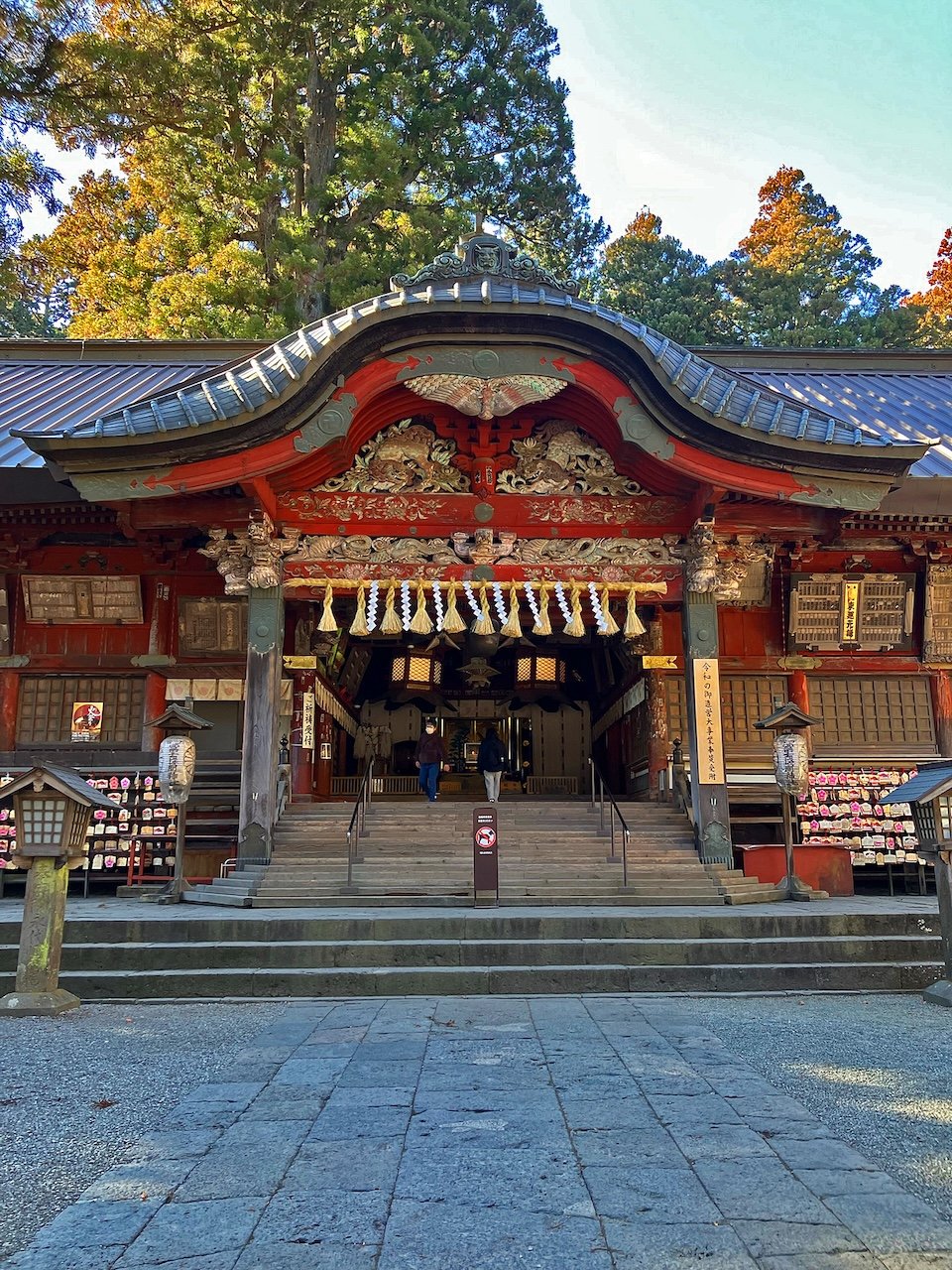

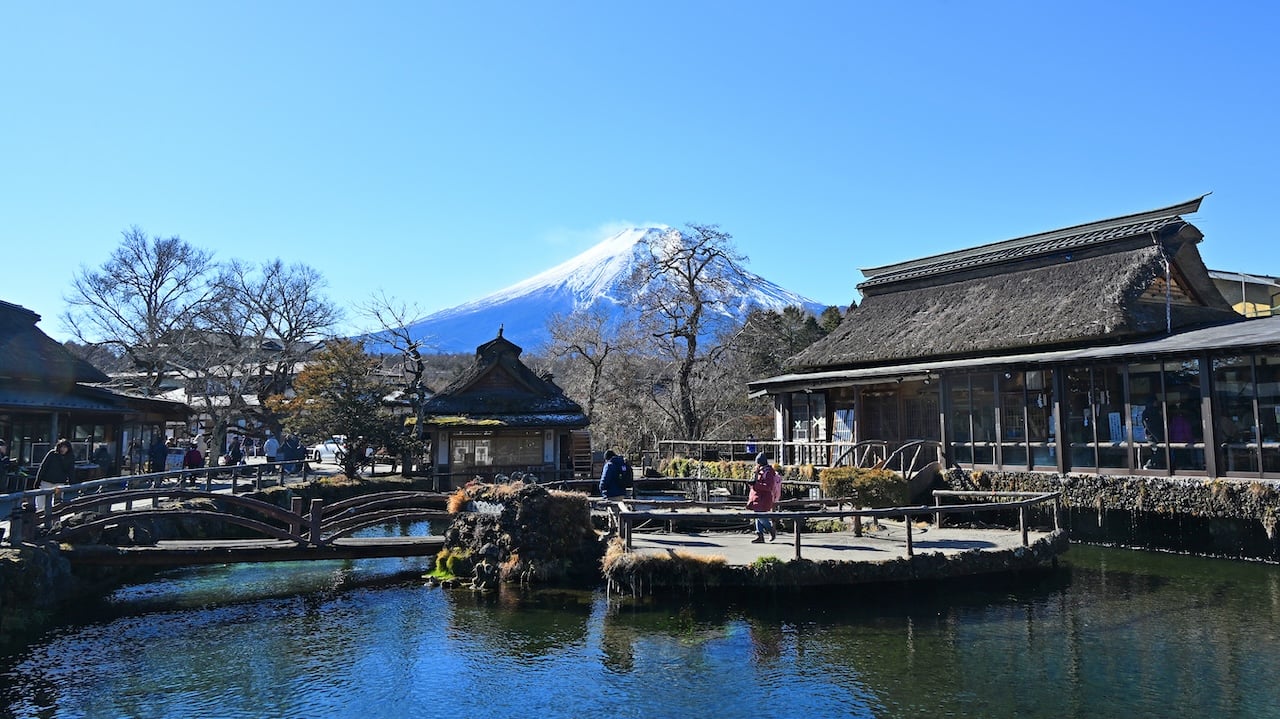
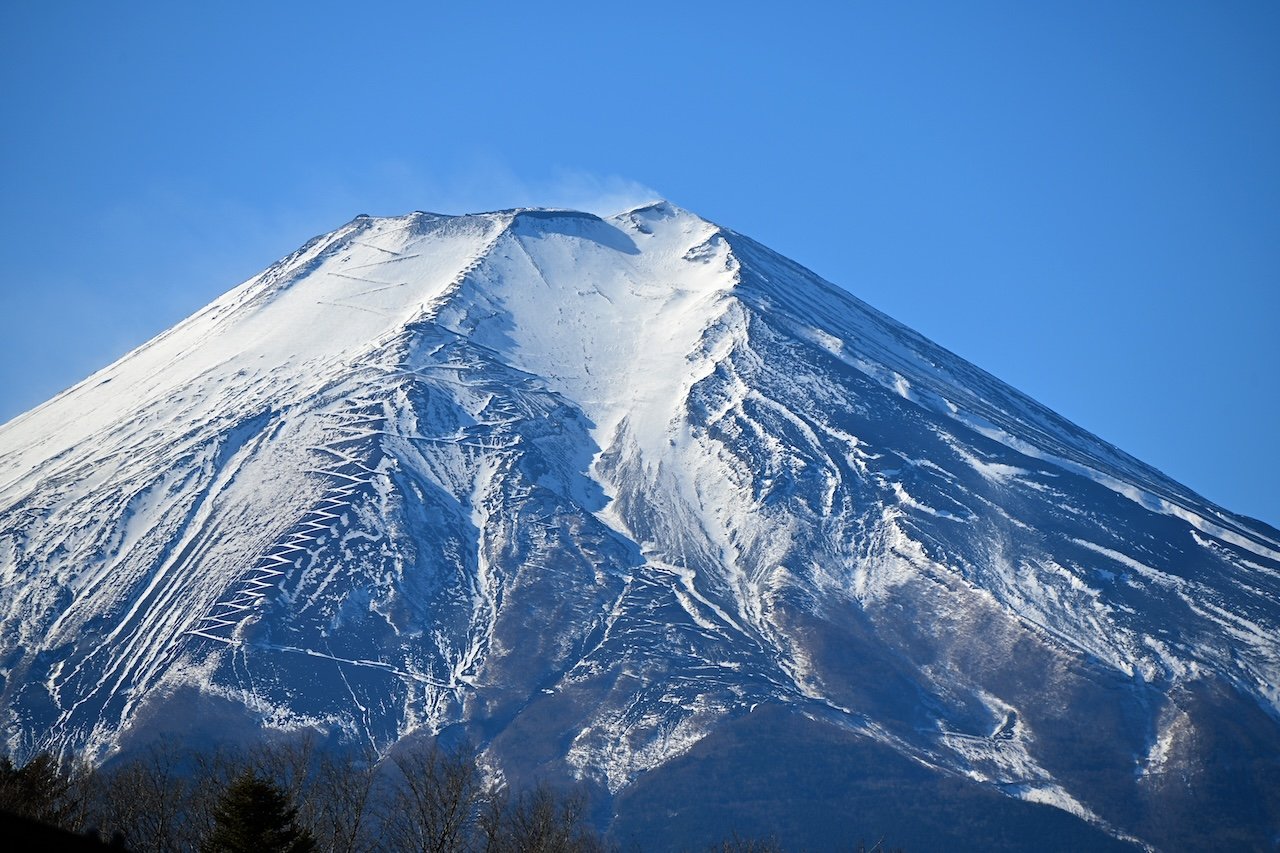
%20(1).png?width=3690&height=2079&name=Jetset%20Seeker%20Logo%20(Banner)%20(1).png)

